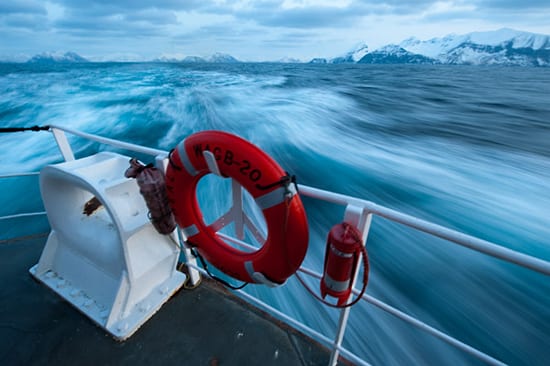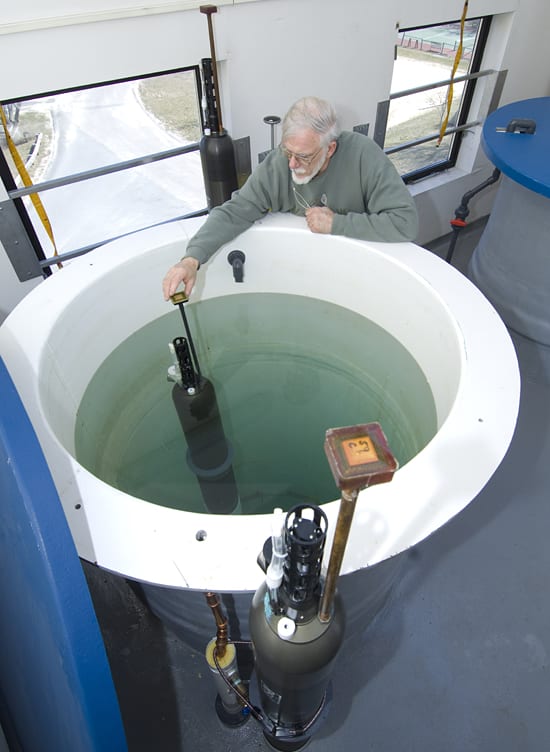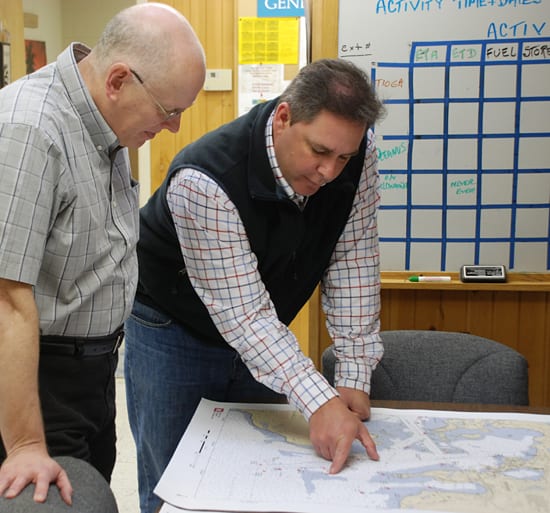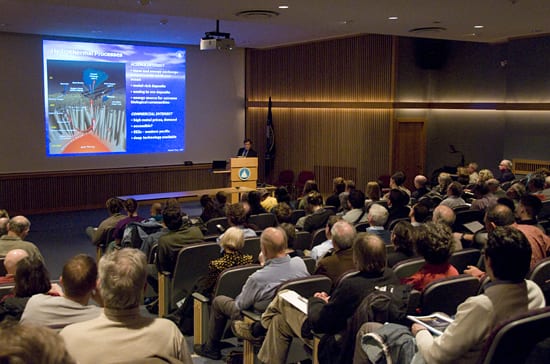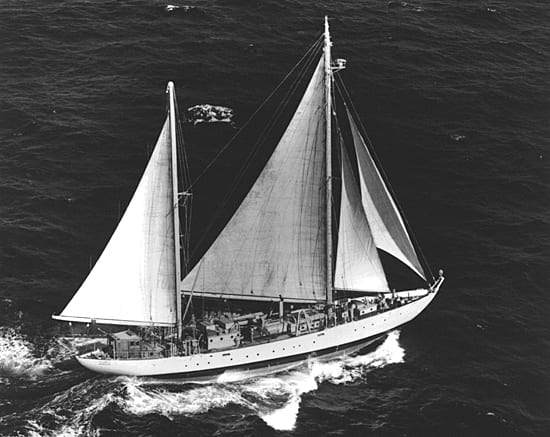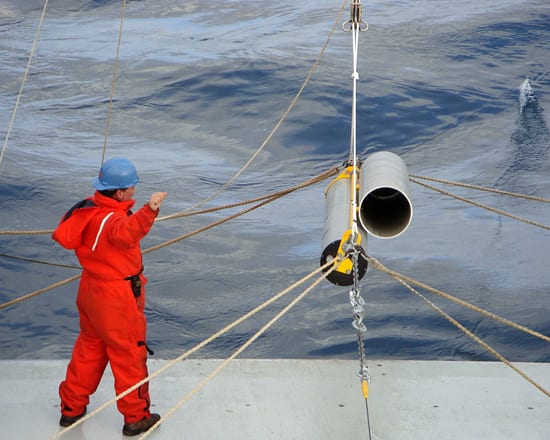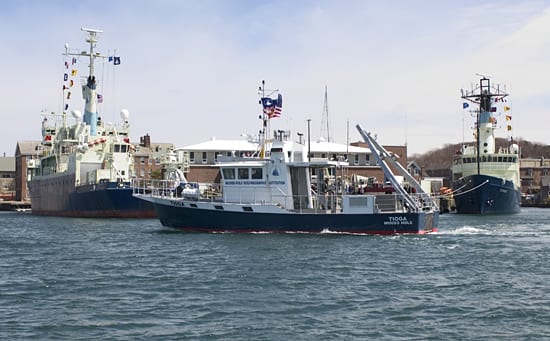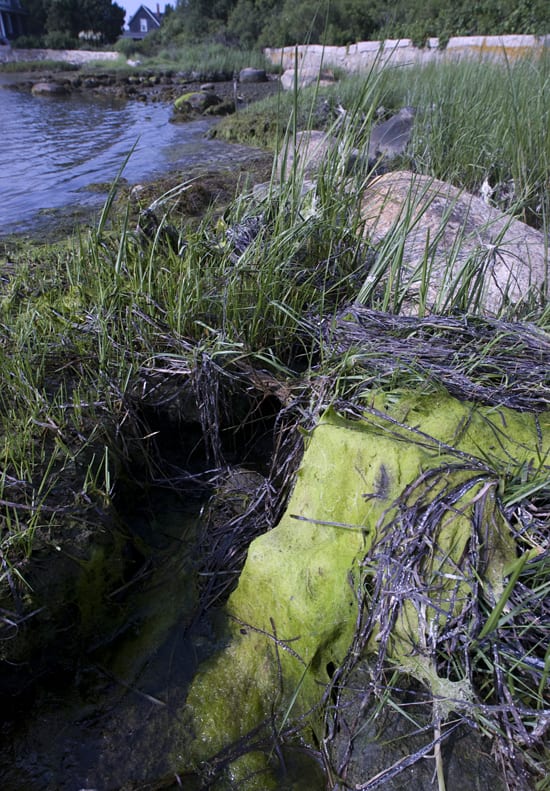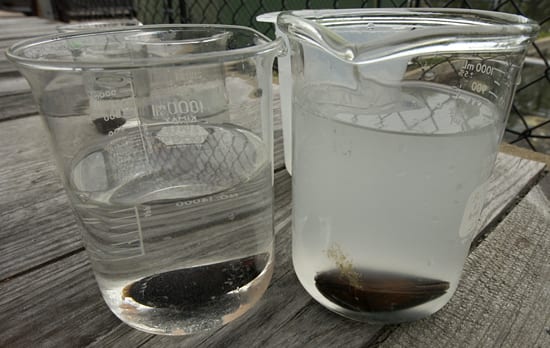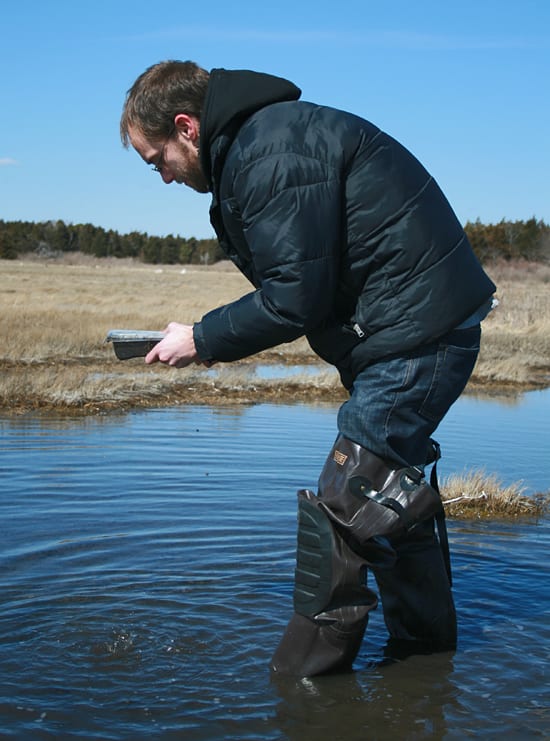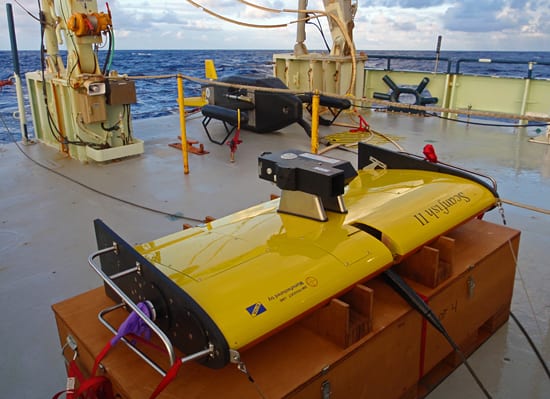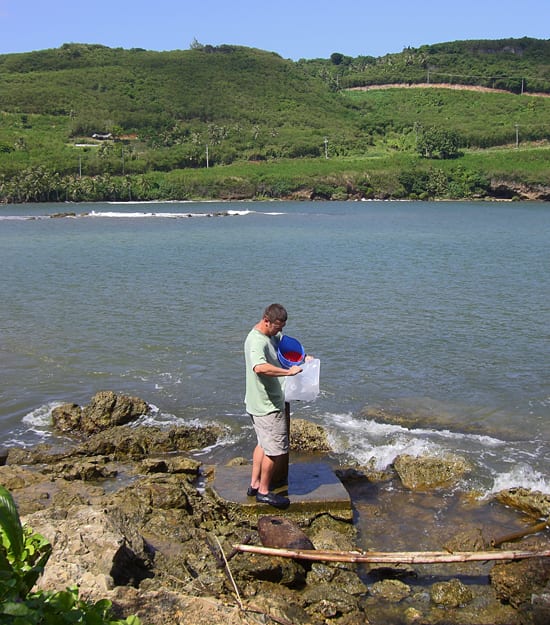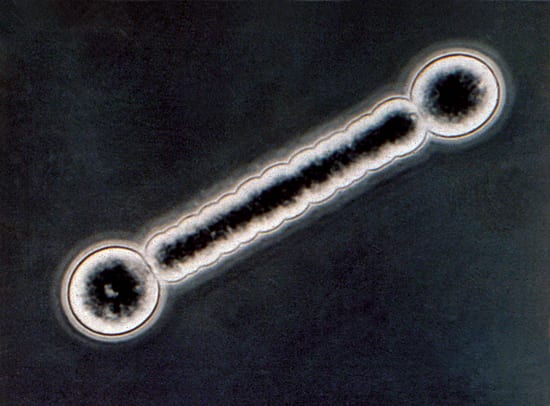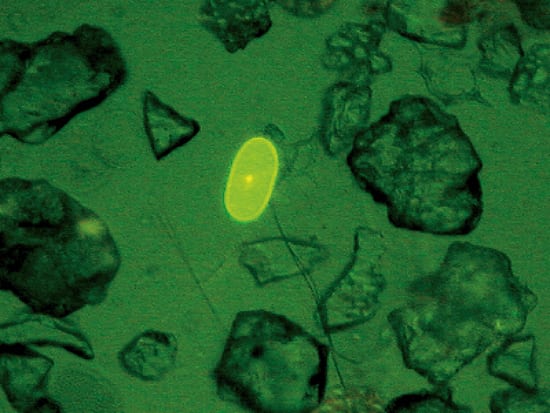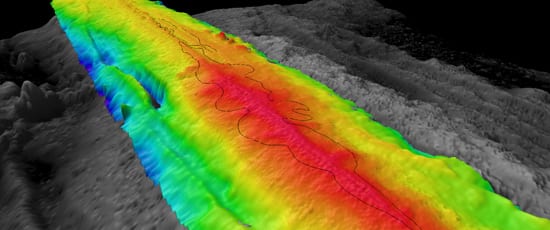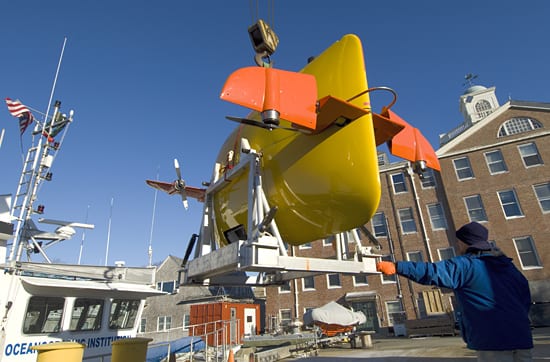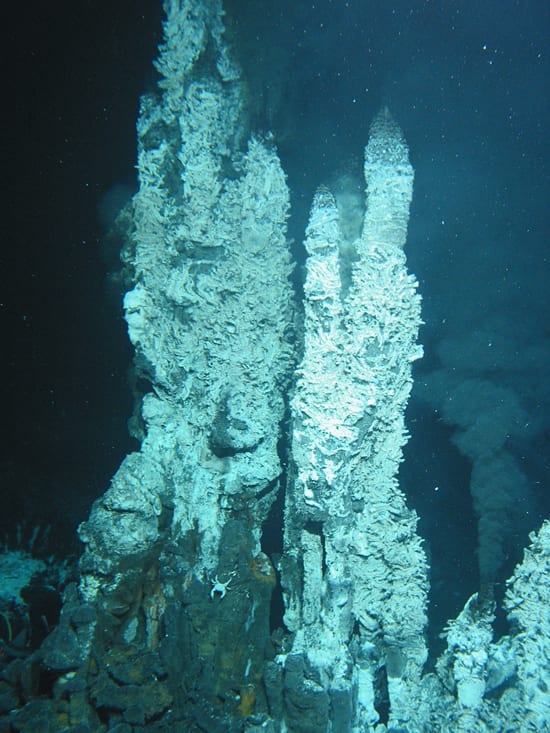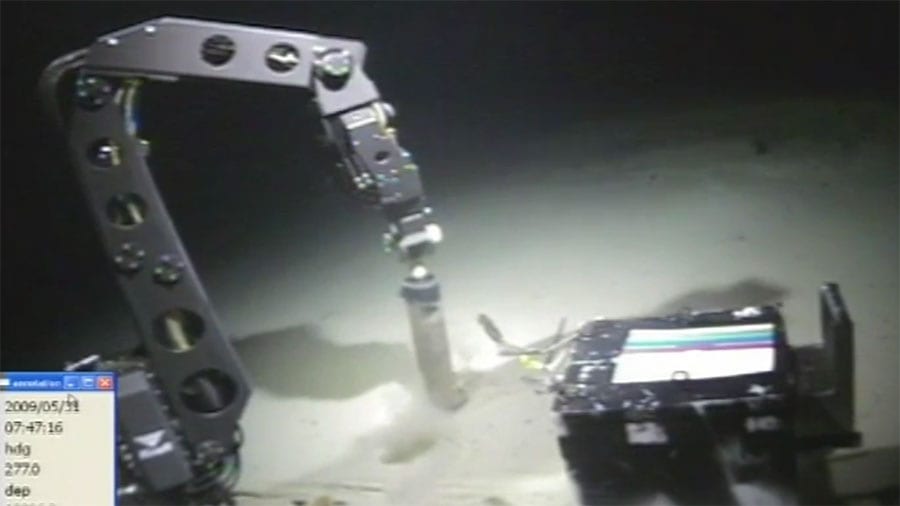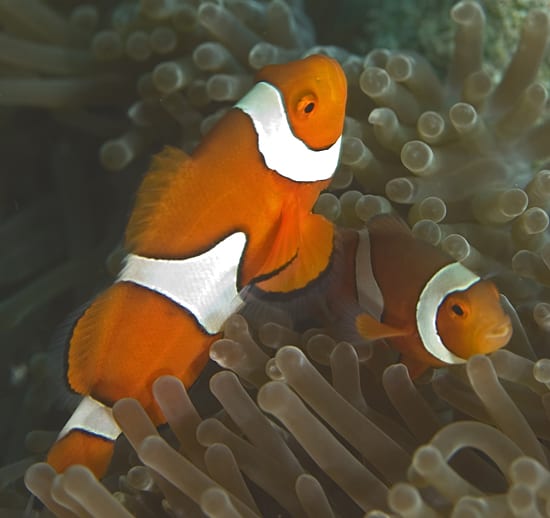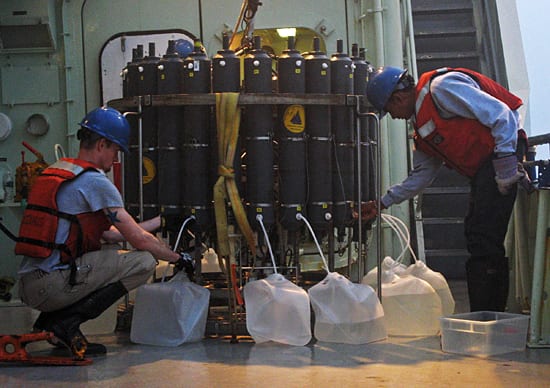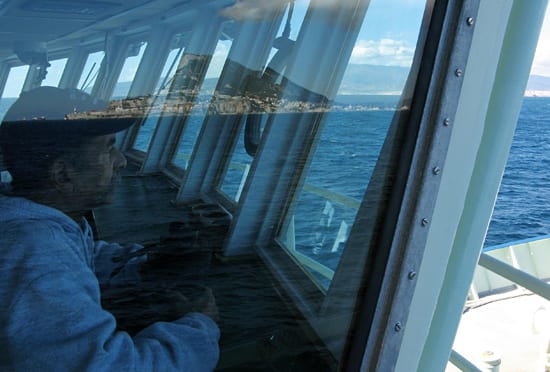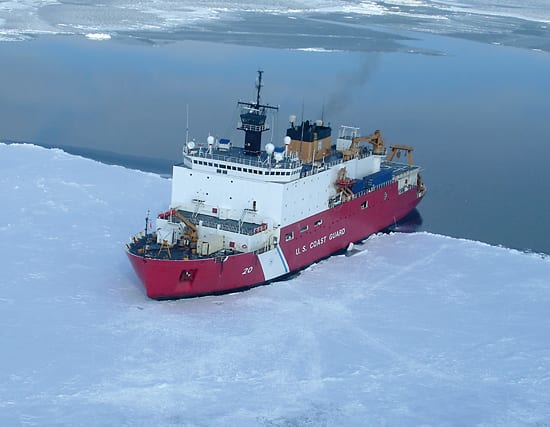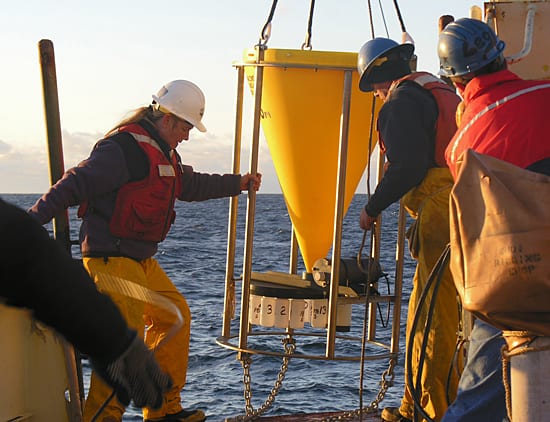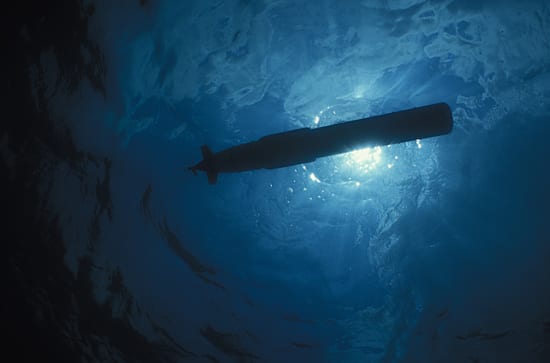Multimedia Items
Into the wide blue yonder
The U.S. Coast Guard Cutter Healy steams north out of Dutch Harbor, a port in the Aleutian Islands of southwestern Alaska, heading toward the ice of the Bering Sea. The…
Read MorePhoning home
Engineer Jim Valdes observes a SOLO (Sounding Oceanographic Lagrangian Observer) float‘s response to commands in a test tank facility. Autonomous instruments that drift with the currents while measuring ocean temperature…
Read MoreCharting a new course
Eric Benway from WHOI Marine Operations (center) points out the proposed new alignment of channel markers in Great Harbor to Al Suchy, Director of Ship Operations at WHOI. A meeting…
Read MoreDig what he’s saying?
Maurice Tivey, a geologist at WHOI, addressed an international group of scientists, policymakers, environmentalists, and industry representatives who gathered at WHOI in early April 2009 for a workshop and public…
Read MoreR/V Atlantis, 1931-1964
Atlantis was the first Woods Hole Oceanographic Institution research vessel and the first ship built specifically for interdisciplinary research in marine biology, marine geology and physical oceanography. The “A-boat” made…
Read MoreIn the mix
WHOI senior engineering assistant Brian Guest deploys one of six sound sources from the R/V Roger Revelle as part of the Diapycnal and Isopycnal Mixing Experiment in the Southern Ocean…
Read MoreTioga Slideshow
Slippery when wet
What looks like a lime-green sheet of paper is actually a mat of algae. Harmful algal blooms, like this one in West Falmouth Harbor, Mass., can occur in coastal waters…
Read MoreBlue mussels
Diane Poehls Adams, a guest investigator in the Biology Department, cultures blue mussels (Mytilus edulis) from larvae to mature adults in an effort to learn which are most successful in…
Read MoreMarsh sentinels
Postdoctoral scholar Adam Reitzel collecting the “starlet sea anemone”, Nematostella vectensis, at Great Sippewissett Marsh. Adam and other members of Ann Tarrant’s lab in the Biology department are interested in…
Read MoreWaiting in the wings
The bright yellow “ScanFish II,” a new towed vehicle that takes samples while it flies up and down in the water, and the Video Plankton Recorder (background) are stowed on…
Read MoreFrom a river to the ocean
Research Associate Paul Henderson collects a water sample from the Talofofo River, Guam. Samples like this help researchers better understand the effects, both locally and globally, of coastal contaminants in…
Read MoreBarbell Bacterium
One group of bacteria—the cyanobacteria—has completely transformed Earth’s environment through their long history. Three billion years ago, ancestors of cyanobacteria infused Earth’s ancient atmosphere with the byproduct of their photosynthesis—oxygen—changing…
Read MoreGreen seeds, red tide
Harmful algae blooms (“red tide”) commonly occur in the Gulf of Maine in spring. Blooms result from the rapid reproduction of toxic algae called Alexandrium when their seed-like resting stages…
Read MoreNew ocean floor
More than two-thirds of Earth’s crust is created along seafloor spreading ridges, yet scientists rarely have a chance to observe the process is action. An event along the East Pacific…
Read MoreChanging of the guard
Sentry, a new autonomous underwater vehicle (AUV) built by engineers at WHOI, is loaded onto the R/V Tioga for testing operations during December 2007. The free-swimming underwater robot, which is…
Read MorePrecious metals from deep-sea vents
This sulfide structure is part of the “Bio 9” hydrothermal vent at 9 degrees north on the East Pacific Rise. Deep-sea hydrothermal vent systems are attracting considerable interest from commercial…
Read MoreNereus in the Challenger Deep
Originally published online May 31, 2009
Read MoreTracking Nemo and his relatives
A pair of clownfish (Amphiprion percula) shelter among anemones in Kimbe Bay, Papua New Guinea. These coral reef fish — the same species as Disney’s famed Nemo — are the…
Read MoreTapping the ocean
WHOI summer student fellow Zack Bailey (Indiana State University) and cruise volunteer Pradeep Ranasinghage (Kent State University) collect seawater from the Niskin bottles on a CTD rosette, in June 2008.…
Read MoreGibraltar on his mind
R/V Oceanus captain Diego Mello looks out for traffic as he guides the ship into the port of Gibraltar. The research vessel stopped at Gibraltar to refuel on its way…
Read MoreCharting a polar ocean ecosystem
In March 2008 the icebreaker USCGC Healy carried researchers led by WHOI biologist Carin Ashjian to sample in nearly 200 locations in the Bering Sea. The cruise was supported by…
Read MoreSetting a Trap
A sediment trap is prepared for deployment from the research vessel Oceanus during a cruise in the Gulf of Maine. The instrument collects sinking particles on a pre-programmed schedule and…
Read MoreInto the blue
During a 2006 pilot project to study the effect of ocean currents on fish larvae spawned on coral reefs in Belize, the autonomous underwater vehicle REMUS (an acronym for Remote…
Read More
